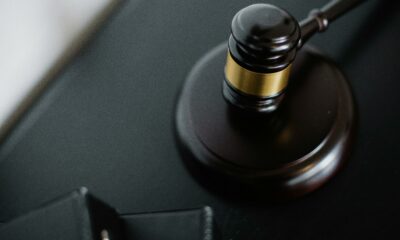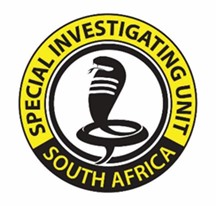Motoring
How to Buy a Used Car in South Africa: The Ultimate 2024 Checklist

Buying a used car in South Africa can feel like navigating a minefield. Between scams, hidden mechanical issues, and confusing paperwork, it’s easy to make a costly mistake. This isn’t just another list of things to check; this is your step-by-step survival guide for 2024, designed to take you from a casual browser to a confident buyer.
Phase 1: The Preparation (Before You Even Look at a Car)
Set Your Real Budget
-
Purchase Price: Your maximum cash amount.
-
Hidden Costs: Add at least R15,000 for:
-
License & Registration (R2,500 – R5,000)
-
Roadworthy Certificate (R800 – R1,500)
-
Initial Service (R1,500 – R3,000)
-
Potential Immediate Repairs (R5,000 – R10,000)
-
Get Pre-Approved for Finance
-
Know exactly what you can afford before falling in love with a car.
-
Pre-approval gives you bargaining power at dealerships.
Research Thoroughly
-
Check common problems for your shortlisted models.
-
Compare insurance quotes for different cars.
-
Use online valuation tools to know fair market prices.
Phase 2: The Digital Inspection (Finding the Right Car)
Verify the Vehicle’s History
-
Get the VIN and do an eNaTIS check to confirm:
-
Ownership history
-
Accident history
-
Outstanding traffic fines
-
Police clearance status
-
-
Walk away if the seller can’t provide the VIN.
Analyze the Advertisement
-
Red Flags:
-
“Just needs a small repair”
-
Price significantly below market value
-
Blurry or stock photos only
-
Seller pressure (“many interested buyers”)
-
-
Green Flags:
-
Multiple clear, recent photos
-
Complete service history mentioned
-
Seller has owned the car for several years
-
Realistic, market-related price
-
Phase 3: The Physical Inspection (The 30-Minute Checklist)
Exterior Inspection
-
Check for uneven panel gaps (sign of accident damage)
-
Look for paint color mismatches between panels
-
Inspect tire tread depth and uneven wear
-
Check for rust in doors, sills, and under the car
-
Test all lights (headlights, brake lights, indicators)
-
Ensure all doors, boot, and bonnet open smoothly
Interior Inspection
-
Check for damp carpets or musty smell (water leaks)
-
Test EVERY button, switch, and control
-
Look at seat wear versus the odometer reading
-
Check that all seatbelts work properly
-
Test air conditioning and heating
-
Verify dashboard warning lights come on and go off
Engine Bay Check
-
Look for oil leaks around the engine and gearbox
-
Check oil color (should be honey-brown, not black)
-
Inspect coolant level and color (should be clean, not rusty)
-
Look for corrosion on the battery terminals
-
Check for new parts that might indicate recent problems
Phase 4: The Test Drive (The Ultimate Truth Test)
Cold Start Procedure
-
Arrive early and insist on starting the car COLD
-
Listen for unusual noises on startup
-
Watch for excessive smoke from the exhaust
Driving Tests
-
Test brakes for pulling or vibration
-
Listen for suspension knocks over bumps
-
Check gear changes are smooth (manual and automatic)
-
Test steering for vibration or pulling to one side
-
Verify the car accelerates smoothly without hesitation
-
Check for unusual noises when turning
Post-Drive Inspection
-
Check for new fluid leaks under the car
-
Feel the wheels for excessive brake dust (sticky calipers)
-
Check for burning smells from the engine bay
Phase 5: The Negotiation & Paperwork
Essential Documentation
-
Original vehicle registration certificate (NATIS document)
-
Valid roadworthy certificate (not older than 60 days)
-
Service history and maintenance records
-
Proof of purchase (invoice with both parties’ details)
-
Identity documents of both buyer and seller
Negotiation Power Points
-
Use any issues found during inspection as bargaining chips
-
Know the market value and stick to your maximum budget
-
Be prepared to walk away if the deal doesn’t feel right
Phase 6: Final Steps (After Purchase)
Immediate Actions
-
Transfer ownership at the registering authority within 21 days
-
Get comprehensive insurance before driving the car
-
Complete any essential maintenance identified during inspection
First Month Ownership
-
Change all fluids (oil, coolant, brake fluid)
-
Replace air and fuel filters
-
Consider a professional detail to start fresh
Red Flags That Should Make You Walk Away
- Seller can’t produce the NATIS document
- VIN numbers don’t match on the document and car
- Outstanding traffic fines you’ll inherit
- Evidence of odometer tampering
- Major accident damage not disclosed
- Pressure to complete the deal quickly
- Payment requests to personal accounts (dealership sales)
The Bottom Line
Buying a used car doesn’t have to be scary if you’re systematic. This checklist removes emotion from the process and replaces it with practical, actionable steps. The right car is out thereyou just need the right process to find it.
Remember: The most expensive car is a cheap car with hidden problems. Take your time, follow this checklist, and drive away with confidence.
Click here for more Motoring News
Follow Carmag on Instagram and Facebook
Click here to browse Cheap Cars for sale



























